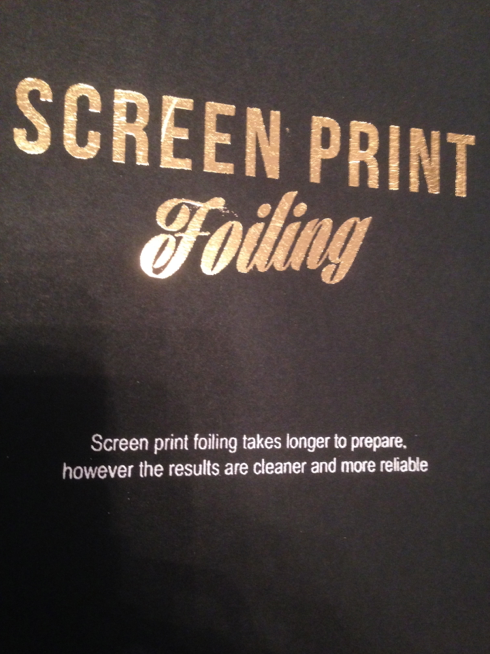10 / 11 / 13
DESIGN FOR PRINT / OUGD504FLOCKING & FOILING.
IDEAS / PRINTING.
During my sudden flood of ideas, i thought of a concept to depict flock an foil that related to the concepts i had already created for both lino and emboss. this played on the mechanism of opening the book.
Having the left over foil opposite to the actual print of foil makes it look as if the print has been created and revealed as the page is lifted and turned.
For the flocking and foiling type I decided to remain consistent with other pages in using the 'Harbell' script font.
This was pretty simple to execute.
for the left over flock it was easy to just cut this strip out and have it as its own page, however for the foil, because it is quite a fragile material so I had to think around making it a page with in the book.
for both the flock and foil I decided to use a petrol blue as it was the only flock and foils available that resembled each other. There were black flock and foils, however I felt that having a hint of colour may appeal slightly more.
To get around this I decided to stick the reversers foil onto some card and then make a frame to hide the ruff edges, i know that this isn't the best of aesthetics but with what I had I feel that it is still appropriate and clean and still does its job.
Im happy with this out come, It turned out as I wanted and I feel that as well as showing the process it also remains with in the concept that flows through out the book.
* * * *
To show the method that used a simple print out and a heat press i came up with the idea of just laying foil over a section of the print out. This way its clear to see how the foil fuses to the ink under the heat.
I tried this technique several times. Unfortunately the only printer available to which I am allowed to insert my own stock is the one situated in the studio. this printer does not print very well and the toner applied is very weak. Knowing this in advance, i made sure that everything was ready for the foiling process and printed the stock so the ink was a fresh as possible. I printed and walked quickly to the heat press an applied various coloured foils.
Some foils stuck better than others.
Because of the issue with the toner I wasn't really getting anywhere so in the end i had to settle for the best of what I had.
Th blue foil was the best I could manage in the circumstances.
* * * *
To show the difference between the single heat press foiling method and the screen printed foiling method, To keep the simplicity concept. I decided to just show and example of each similar to the concept used for the lino cutting styles.
This is the layout I printed on to the stock in order to foil with the heat press. I printed the heat press page using just the heat press and the screen print page using a screen.
I decided to use a dark stock for this example as the other foiling examples had been on lighter stock. this will show another advantage of the method.
The effects of each printing methods were shown very well in these samples which justifies the statements made in the explanation printed in the white foil.
* * * *
With in the pages I had one free page opposite the introduction page for inkjet foiling.
In my plan I have a simple page that has examples of different coloured foils. Unfortunately I did not manage to get this done while in collage.
Coincidentally, while trying to sort the first foiling example, the one I made to apply a card border around i accidentally stuck some cello-tape to the foil and as I pealing it off the metallic came off with in.
I utilised this 'accident' to my advantage and ooh the left over foil I had.
Even though this page does not have that much of a purpose i felt it was a much better option than leaving it blank.

























No comments:
Post a Comment